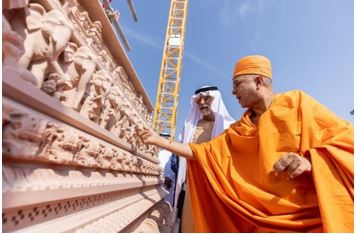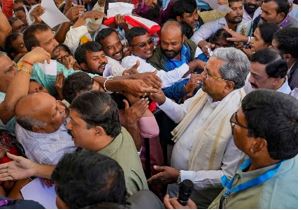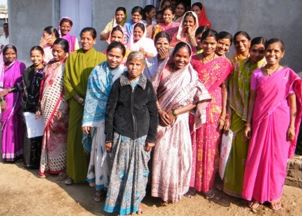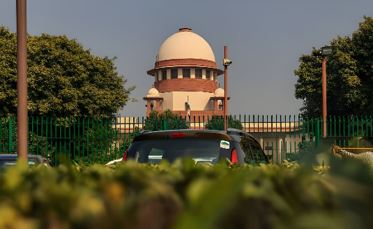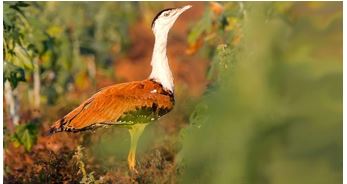

Art & Culture (GS-I)
BAPS Hindu Mandir
‘BAPS Mandir’, the first traditional Hindu temple in the United Arab Emirates has been inaugurated.
About
- The BAPS Hindu Mandir in Abu Dhabi is the first Hindu temple in UAE.
- The temple is built on a 27-acre site in Abu Mreikhah, near Al Rahba off the Dubai-Abu Dhabi Sheikh Zayed Highway, at a cost of around ?700 crore.
- It incorporates intricately designed pink sandstone and marble façade with seven spires that represent each of the Emirates of the country.
- The temple has been made of 40,000 cubic metres of marble, 1,80,000 cubic metres of sandstone and over 1.8 million bricks.
- The temple’s design draws inspiration from Vedic architecture and sculptures.
- Many of the statues and carvings have been done by artisans in India and have been shipped to Abu Dhabi.
- The vast complex includes a large amphitheatre, a gallery, a library, a food court, a majlis and two community halls with space for 5,000 people.
What is BAPS?
- BAPS stands for the Bochasanwasi Shri Akshar Purushottam Swaminarayan Sanstha (BAPS).
- The organisation is named after Bhagwan Swaminarayan, a religious leader who lived in the late 1700s.
- It is a socio-spiritual Hindu faith with its roots in the vedas and was pioneered by Bhagwan Swaminarayan (1781-1830) in the late 18th century and established in 1907 by Shastriji Maharaj (1865-1951).
- The Akshardham temples in Delhi and Gujarat are also run by BAPS
Geography (GS-I)
Berrechid Plain
In Berrechid province, Morocco, which is historically known for its fertile land (breadbasket), there is a serious problem due to ongoing drought.
About
- The Berrechid plain has historically been known as Morocco’s granary for its vast production of cereals and fodder.
- Over the past two decades, the plain has seen a disorderly intensification of irrigation.
- More than 88 per cent of Berrechid's vast agricultural lands are not irrigated, with farmers relying instead on rain.
Irrigation crisis
- Like in Morocco, water is incredibly precious in all of the Near East and North Africa.
- Freshwater availability in the region is around one-tenth of the global average, having decreased by 78 percent between 1962 and 2018, compared with a global reduction of 59 percent over the same period.
Polity & Governance (GS-II)
Janaspandana
The second edition of the State-level Janaspandana, a public grievance redressal programme evoked massive response with over 20,000 people attending it with 12,372 petitions on various grievances in Karnataka.
What is Janaspandana?
- Janaspandana is a call centre that helps address various grievances of the citizens.
- Under this programme, the Chief Minister of Karanataka reach out directly to people to address their concerns and issues with promise of speedy solutions.
Polity & Governance (GS-II)
Women make up only 9% of Information Commission: RTI
Merely 9 per cent of Information Commissioners at the central and state levels appointed since 2005 were women while retired government officials dominated such postings cornering 58 per cent of the total appointments, as per a new report.
Key-highlights of the Report
- Title: 'Report Card on the Performance of Information Commissions in India 2022-23'
- 12 Information Commissions -- Andhra Pradesh, Bihar, Chhattisgarh, Himachal Pradesh, Madhya Pradesh, Manipur, Meghalaya, Mizoram, Sikkim, Telangana, Uttarakhand and West Bengal -- never had a woman commissioner since they were constituted.
- Of the 29 Information Commissions across the country, only 5 per cent chiefs ever were women and at present, none of the information commissions was headed by a woman.
Polity & Governance (GS-II)
Voters in India
Nearly 97 crore people are registered to vote in the forthcoming Lok Sabha elections and around 1.85 crore of them are in the 18-19 age-group, as per the the Election Commission (EC).
Important Facts
- Total: A total of over 96.88 crore voters are registered across the country.
- New addition: More than 2 crore young electors, spanning the 18-19 and 20-29 age groups, have been added to the electoral roll.
- Female voters: There has been a remarkable increase in female voter registrations, pointing at efforts towards gender parity. Female voter enrollment surpassed male voters during 2024 data, with over 1.41 crore newly enrolled female electors.
- PwD: Around 88.35 lakh Persons with Disabilities (PwD) have been flagged in the electoral roll database, ensuring accessibility and inclusivity on polling day.
Polity & Governance (GS-II)
SC refuses to stay law to appoint ECs
The Supreme Court refused, for a second time, to ban a contentious new law on the appointment of election commissioners.
About the Bill:
- Background: The Bill replaces theElection Commission (Conditions of Service of Election
- Aim:The bill provides details related to the appointment, qualifications, search committee, selection committee, term of office, salary, resignation and removal, leave, and pension of the chief election commissioner and other election commissioners.
- Provisions of the Bill:
- As per the provisions of the bill, the CEC and ECs will be appointed by the President of Indiaon the recommendation of a selection committee.
- However, the panel will consist of three members – the prime minister, the Union cabinet minister, and the leader of the opposition.
- Recommendations of the Selection Committee will be valid even when there is a vacancy in this Committee.
- A Search Committeeheaded by the Cabinet Secretary will propose a panel of names to the Selection Committee.
- Eligibility for the postsincludes holding (or having held) a post equivalent to the Secretary to the central government.
- The salary and conditionsof service of the CEC and ECs will be equivalent to that of Cabinet Secretary. Under the 1991 Act, it was equivalent to the salary of a Supreme Court Judge.
- Eligibility criteria: The CEC and ECs must:
- be persons of integrity,
- have knowledge and experience in the management and conduct of elections, and
- be or have been Secretary (or equivalent) to the government.
- Term and reappointment: Members of the Election Commission will hold office for six years, or until they attain the age of 65 years, whichever is earlier.
- Members of the Commission cannot be re-appointed. If an EC is appointed as a CEC, the overall period of the term may not be more than six years.
Economy (GS-III)
Microfinance institutions (MFIs)
Reserve Bank of India (RBI) slammed microfinance institutions (MFIs) for charging higher rates to borrowers, thus cautioning against irresponsible practices.
- Microfinance institutions (MFIs) are financial companies that provide small loans to people who do not have any access to banking facilities.
- The definition of "small loans" varies between countries.
- In India, all loans that are below Rs. 1 lakh can be considered as microloans.
- Different categories of institutions are involved in providing microfinance in India, such as:
- Commercial banks
- Credit unions
- NGOs (Non-Governmental Organizations)
- Sectors within government banks
- Cooperatives
Economy (GS-III)
MSCI Index
The gap in weightage between Indian and Chinese equities on the MSCI index is narrowing.
- Morgan Stanley Capital International (MSCI) is an investment research firm that provides stock indexes, portfolio riskand performance analytics, and governance tools to institutional investors and hedge funds.
- MSCI is perhaps best known for its benchmark indexes—including the MSCI Emerging Market Indexand MSCI Frontier Markets Index—which are managed by MSCI Barra.
- MSCI added five Indian stocks to its Global Standard index.
- Punjab National Bank and Union Bank of Indiawere added to the large-cap category
- Bharat Heavy Electricals and NMDCwere included in the mid-cap category.
- GMR Airports Infrastructure was moved to the mid-cap category from small-caps.
Environment (GS-III)
Olive Ridley turtles
Dead Olive Ridley turtles continue to wash up on the beaches of Visakhapatnam coast in this current breeding season. The deaths are attributed to trawling activities and pollution from industries among others.
About Olive Ridley Turtles:
- They are the smallest and most abundant of all sea turtles found in the world.
- Major nesting sites in India: Rushikulya rookery coast (Odisha), Gahirmatha beach (Bhitarkanika National park) and mouth of the Debi River.
- Scientific name: Lepidochelys olivacea; also known as the Pacific ridley sea turtle.
- Presence: Found in warm waters of the Pacific, Atlantic and Indian oceans.
- Conservation Status:
- IUCN Red List: Vulnerable
- Schedule I of Indian Wildlife (Protection) Act, 1972
- CITES Appendix I
- Features:
- Known for their unique mass nesting called Arribada, where thousands of females come together on the same beach to lay eggs.
- These are carnivores and feed mainly on jellyfish, shrimp
Environment (GS-III)
Great Indian Bustard
The Great Indian Bustard (GIB) has not been spotted at the Rollapadu Wildlife Sanctuary in Nandyal district of Andhra Pradesh and its surrounding areas for the last couple of years, which is an indication that the bird is at risk of local extinction.
About Great Indian Bustard:
- The Great Indian Bustard (Ardeotis nigriceps), is a bustard native to the Indian subcontinent. Bustards are large terrestrial birds found in dry grasslands and steppe regions. It is also known as the Indian Bustard; it is among the heaviest of flying birds in existence.
- It is the State bird of Rajasthan and is considered India’s most critically endangered bird.
- It is considered the flagship grassland species, representing the health of the grassland ecology.
- The GIB is now found in a small number only in western Rajasthan, while Gujarat claims to have a few females left in its Banni Grassland Reserve.
- Population: Less than 150 individuals of these birds persist in a few fragmented pockets of Rajasthan and Gujarat.
- As per the last count of the GIB in 2018, there were around 127 birds in the Desert National Park or the DNP in Rajasthan.
- Protection Status:
- International Union for Conservation of Nature Red List: Critically Endangered
- Convention on International Trade in Endangered Species of Wild Fauna and Flora (CITES): Appendix I
- Convention on Migratory Species (CMS):Appendix I
- Wildlife (Protection) Act, 1972: Schedule 1
Science & Technology (GS-III)
Key proteins could predict dementia: Study
In a first, researchers from China’s Fudan University have identified key proteins in the brain that could predict dementia, Alzheimer’s disease, and vascular dementia nearly 10 years before diagnosis.
Key-findings
- Out of a total of 1,463 plasma proteins or blood proteins in the human body, the team found that four were associated with dementia.
- GFAP
- NEFL
- GDF15
- LTBP2
- Blood proteins are proteins present in blood plasma that serve a variety of functions, including the transport of lipids, hormones, vitamins, and minerals.
Alzheimer’s disease
- It is a neurological disorder which causes brain cells to degenerate and die. This leads to loss of memory, problems with words in speaking or writing, poor judgment, changes in mood and personality, confusion with time or place, etc.
- At the first stage, these symptoms are mild but they become more severe with time.
- Alzheimer’s is the most common cause of dementiaamong older adults.
- Alzheimer's disease is thought to be caused by the abnormal build-up of proteins in and around brain cells. One of the proteins involved is called amyloid, deposits of which form plaques around brain cellsand the other protein is called tau.
- There is currently no cure or therapy for dementia, which is a progressively degenerative brain disease resulting in loss of brain function and memory.
